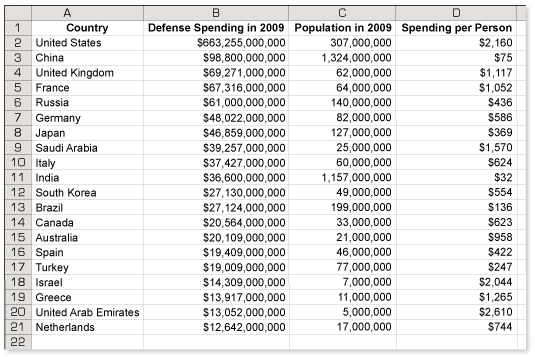-
It seems that people often want math to have rules. Of course, there are rules for rounding numbers to a certain number of significant digits or to a certain decimal place. You know these rules. (Round down on 4 or less. Round up on 5 or more.)
The point of this lesson is not in learning how to apply rules, but in learning to apply common sense when you are communicating about numbers. Here is a general communication standard you should use when you make statements involving numbers.
List only as many significant digits as you are confident are correct.
When you are uncertain about the accuracy of the numbers, use phrases such as "about 210 inches" or "approximately 3.7 inches." If you want to be more precise, then you can add statistical jargon, such as in the statement
"At a 95% confidence level, the average height is 5'7", plus or minus 1 inch."
-
In 1775, the Army, Navy and Marine Corps were established. The War Department was founded 14 years later and in 1949, renamed the "U.S. Department of Defense."
Visit the U.S. Department of Defense website to learn more about the history of the department, read its mission statement, catch up on some military news and view photos of some of the men and women who serve in the U.S. military.
-
In 2010, the population of the United Kingdom was about 62 million. The country's defense department spent about $70 billion.

Defense spending in the United Kingdom is about $1129 per person.
Looking at the defense spending per person is interesting. The following spreadsheet compares the defense spending per person for the top 20 countries.

-
These comments are not screened before publication. Constructive debate about the information on this page is welcome, but personal attacks are not. Please do not post comments that are commercial in nature or that violate copyright. Comments that we regard as obscene, defamatory, or intended to incite violence will be removed. If you find a comment offensive, you may flag it.
When posting a comment, you agree to our Terms of Use.







On a side note, we love the book so far!